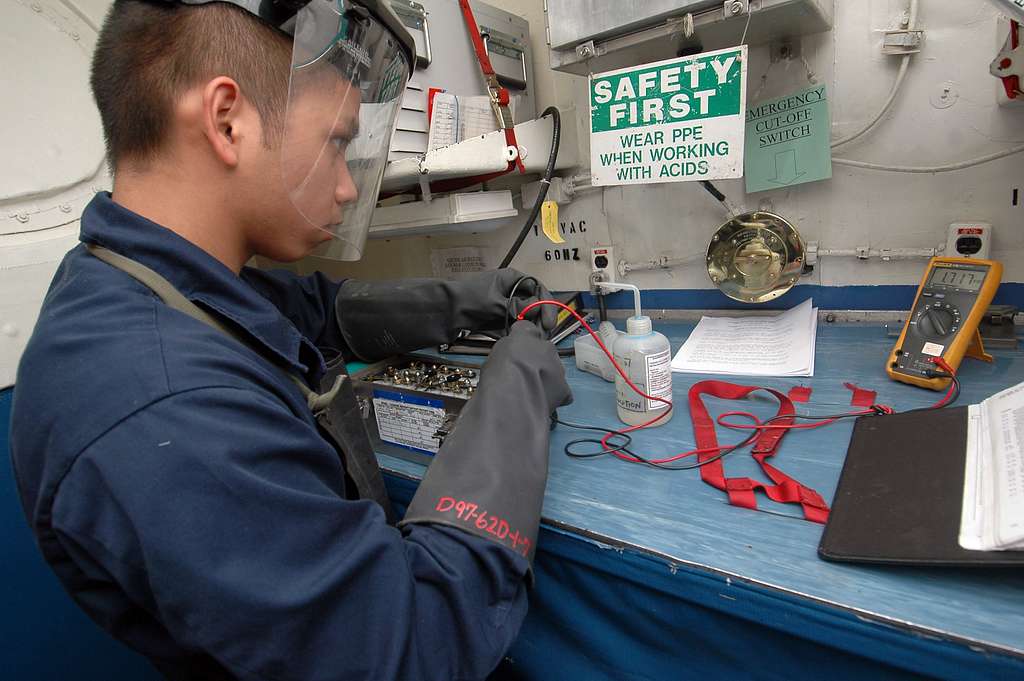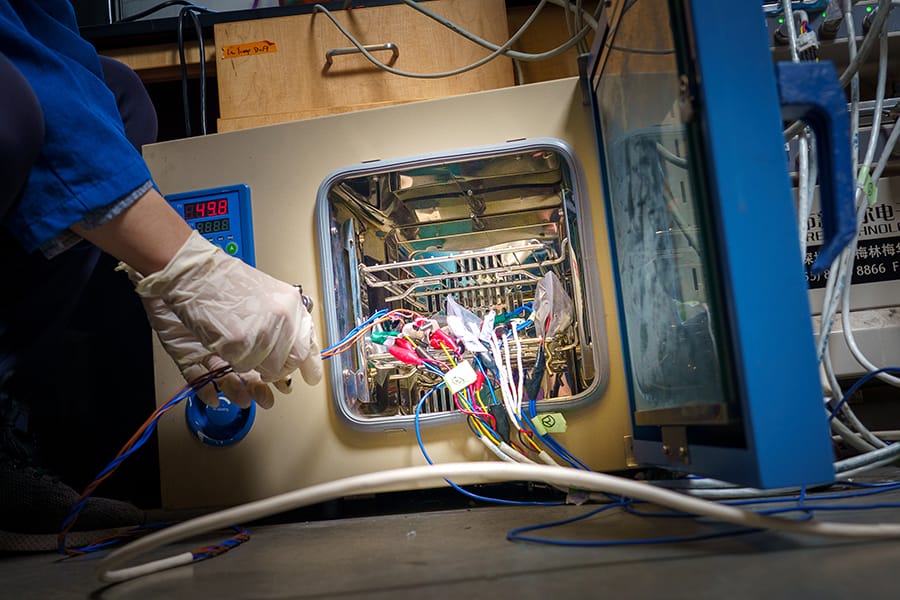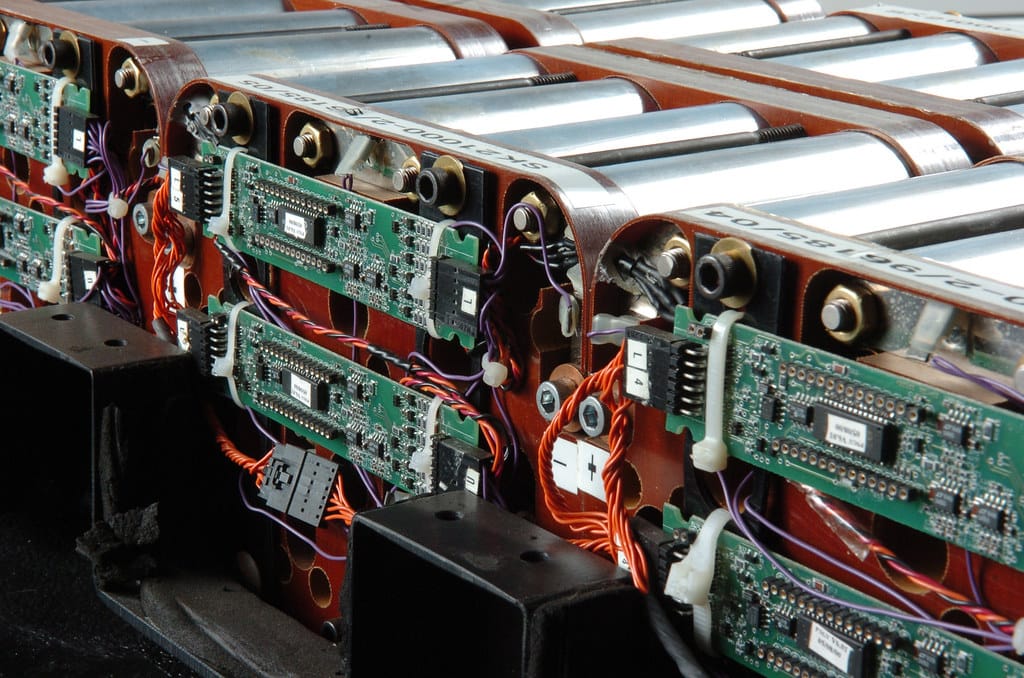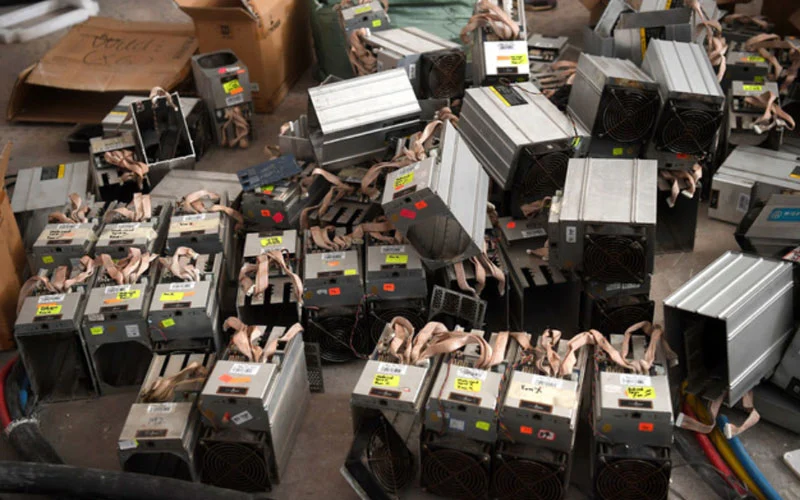
When handling batteries, particularly in hazardous environments, it’s crucial to wear the right Personal Protective Equipment (PPE). The right gear ensures protection against battery-related risks like acid spills, electrical shocks, and potential fires.
Proper PPE is essential when handling batteries, as exposure to hazardous chemicals and electrical risks is common. Key items include gloves, face shields, flame-resistant clothing, and eye protection, among others.
Let’s dive deeper into the specific PPE requirements and explore related safety concerns in battery handling.
What are the potential risks of battery acid spills?
Battery acid spills can cause a range of dangerous health and safety risks, especially when dealing with lead-acid batteries.
Spills from lead-acid batteries can lead to chemical burns, respiratory distress, and environmental damage if not addressed immediately.

Battery acid spills present significant hazards in the workplace. When lead-acid batteries are mishandled or damaged, the sulfuric acid inside can leak, posing serious risks to both workers and the environment. Here’s how:
- Chemical Burns: Direct contact with battery acid can cause severe burns to the skin, eyes, and mucous membranes. Even diluted battery acid can be harmful.
- Respiratory Issues: Fumes from battery acid, especially when overheated or exposed to air, can cause irritation to the respiratory system, leading to coughing, shortness of breath, and chemical pneumonia in severe cases.
- Corrosion: Acid can corrode tools, metals, and electrical systems, damaging equipment and potentially creating further hazards.
- Environmental Damage: If acid is not contained, it can contaminate water and soil, posing long-term ecological threats.
The proper PPE, including chemical-resistant gloves and goggles, is essential for minimizing these risks. Always have acid-neutralizing agents like sodium bicarbonate on hand to address spills promptly.
How do you determine what PPE is necessary for different battery types?
The selection of PPE depends largely on the type of battery being handled and the associated risks.
Choosing the right PPE involves understanding the specific risks of different battery chemistries, such as lead-acid, lithium-ion, or nickel-cadmium.

Different battery types pose distinct hazards, and the corresponding PPE should be chosen accordingly:
-
Lead-Acid Batteries: These batteries require protection from battery acid, so chemical-resistant gloves, face shields, and flame-resistant clothing are essential. Special attention should be paid to eye protection due to the risk of splashes.
-
Lithium-Ion Batteries: Handling lithium-ion batteries requires flame-resistant clothing and gloves due to the risk of fire or explosion in case of damage. Eye protection is also crucial to prevent injury from sparks or battery rupture.
-
Nickel-Cadmium (NiCad) or Alkaline Batteries: These batteries typically require gloves and eye protection, but the risk of fire or explosion is much lower compared to lithium-ion batteries.
Each type of battery comes with its unique set of risks, and understanding those risks is essential to selecting the proper PPE. The environment and the nature of the task (e.g., repairing or charging) also influence the PPE choice.
What kind of clothing should be worn when working with batteries?
Appropriate clothing is critical to protect against exposure to harmful chemicals and potential fires during battery handling.
Wear flame-resistant clothing, long sleeves, and pants to minimize exposure to chemical spills and electrical hazards.

When handling batteries, especially in industrial settings, the right clothing provides an essential layer of protection. The risks of chemical spills, electrical shock, and even fire require specific safety gear:
-
Flame-Resistant Clothing: This type of clothing is particularly important when working with lithium-ion or lead-acid batteries, which are prone to fires if damaged or improperly charged. Flame-resistant coveralls protect workers from potential arc flashes and sparks.
-
Long-Sleeve Shirts and Long Pants: Full-coverage clothing minimizes exposure to hazardous chemicals such as battery acid. Additionally, these items help prevent physical injuries from battery parts or debris.
-
Aprons or Lab Coats: For tasks involving maintenance or assembly, an apron or lab coat adds an extra layer of protection to the body, preventing acid splashes or other harmful materials from coming into contact with the skin.
-
Boots: Rubber or non-conductive boots should be worn to protect against electrical shock and battery acid spills.
Selecting appropriate clothing based on the battery type and the environment is vital to ensure safety during any battery-related task.
What are the safety precautions for battery disposal?
Battery disposal requires strict safety protocols to protect workers and the environment from hazardous materials.
Proper disposal of batteries involves using protective gloves, sealed containers, and following local regulations for safe recycling and disposal.

Disposing of batteries, especially lithium-ion or lead-acid batteries, requires careful handling to avoid leaks, fires, and environmental contamination. The following precautions are necessary:
-
Wear Protective Gloves: Always wear chemical-resistant gloves to avoid direct contact with any hazardous substances during disposal, especially with batteries that may leak acids or chemicals.
-
Use Sealed Containers: Place used batteries in sealed, acid-resistant containers to prevent leakage and exposure to harmful materials during transport.
-
Follow Local Disposal Regulations: Many regions have specific regulations for battery disposal to minimize environmental risks. Recycling programs or designated disposal centers are recommended for safe battery disposal.
-
Neutralize Acid Spills Immediately: If dealing with lead-acid batteries, use neutralizing agents like sodium bicarbonate for any spills and follow safe cleaning procedures.
Following these safety steps ensures both personal safety and environmental protection when disposing of or recycling batteries.
Conclusion
In conclusion, wearing the proper PPE when handling batteries is essential to mitigate the potential hazards associated with acid spills, electrical risks, and chemical exposure. Understanding the specific risks of different battery types and using the right protective gear, including gloves, face shields, flame-resistant clothing, and proper disposal methods, helps ensure a safe work environment. Always prioritize safety protocols and stay informed on the latest guidelines to keep yourself and your team protected.
Zion Zhang
Recent Posts
 Fatigue-Monitoring Smart Vests2025年12月23日Data-Driven Fatigue Prevention for Food Processing and Cold […]
Fatigue-Monitoring Smart Vests2025年12月23日Data-Driven Fatigue Prevention for Food Processing and Cold […] 100-Wash Antimicrobial Durability: Long-Lasting Hygiene Protection for Food and Healthcare Industries2025年12月20日Food processing plants and healthcare facilities are […]
100-Wash Antimicrobial Durability: Long-Lasting Hygiene Protection for Food and Healthcare Industries2025年12月20日Food processing plants and healthcare facilities are […] Future Reflective Materials: Adaptive Visibility for High-Mobility and High-Risk Work Environments2025年12月19日Modern industrial workplaces are evolving rapidly. […]
Future Reflective Materials: Adaptive Visibility for High-Mobility and High-Risk Work Environments2025年12月19日Modern industrial workplaces are evolving rapidly. […] Next-Gen FR Fabrics: Lighter, Softer, and More Durable Flame-Resistant Workwear for Long Shifts2025年12月18日For decades, flame-resistant (FR) workwear has been […]
Next-Gen FR Fabrics: Lighter, Softer, and More Durable Flame-Resistant Workwear for Long Shifts2025年12月18日For decades, flame-resistant (FR) workwear has been […] Nano-Coatings Reduce Washing Frequency: Smarter Workwear for Cleaner, More Efficient Operations2025年12月17日Industrial workwear is no longer evaluated solely on […]
Nano-Coatings Reduce Washing Frequency: Smarter Workwear for Cleaner, More Efficient Operations2025年12月17日Industrial workwear is no longer evaluated solely on […] Self-Healing Fabrics: The Future of Durable Protective Workwear in Extreme Industries2025年12月16日Self-healing fabrics represent one of the most […]
Self-Healing Fabrics: The Future of Durable Protective Workwear in Extreme Industries2025年12月16日Self-healing fabrics represent one of the most […]
CONTACT US
- Feel free to contact us any time. We will get back to you as soon as we can!
- +86-17330061805
